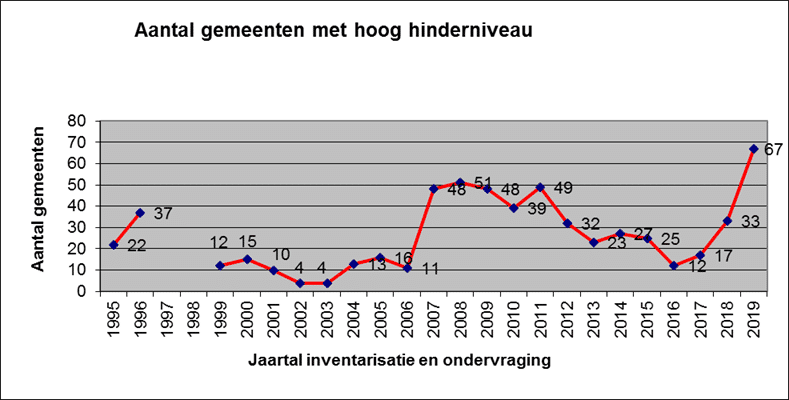Spread
Where do oak processionary caterpillars/moths come from?
The oak processionary moth originates in Southern Europe, but has moved northwards over the past 30 years. The first nests were observed in the Netherlands in 1991. In 2004 and 2007, there was a peak in the number of reports. Since then, the caterpillars have moved further north. The species moves northwards along with shifting climatic zones caused by rising temperatures. This ‘population shift’ has also been observed in other animals, including the pine processionary and the tiger mosquito.
Why this sudden, huge increase?
The oak processionary has benefited from the changing climate.
Mild winters and hot, dry summers stimulate the growth of populations.
Spread in Belgium (province of Antwerp)

In the above graph, we can see a strong increase in problems with the oak processionary in 2007 and 2008. These issues surpass the problems experienced in 1996 when the first peak occurred. From 2012, problems reduced compared to the previous 5 years. In 2018 and 2019, there was a noticeable increase in caterpillars and nests. This almost certainly relates to the good weather during the female flying period.
In general, we can say that, until 2003, the issue (high number of affected locations) in the province of Antwerp was limited to the north of the regions of Noorderkempen and Antwerp. In 2004 and 2005, the problem expanded to Zuiderkempen and the region around Mechelen. Since 2008, the issue has concerned the entire province. In 2019, we noticed that some municipalities were struggling with a huge number of affected locations (>100). A few municipalities in the south-west of the province, in contrast, had very few issues.
More detailed information on the spread in the province of Antwerp can be found here.
Spread in the Netherlands

The first nests were observed in the Netherlands in 1991. In 2004 and 2007, there was the first peak in the number of reports. Since then, the caterpillars have moved further north. From an inventory of twenty thousand oak trees, it transpired that in some places there were three times as many caterpillars in 2019 than in the peak year of 2018, while the figure for that year was already four times as many as 2017.